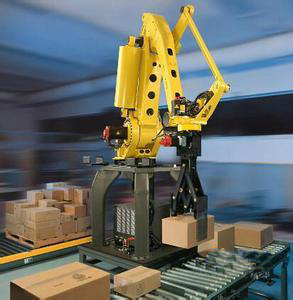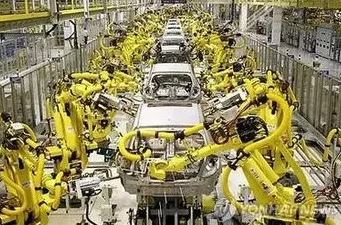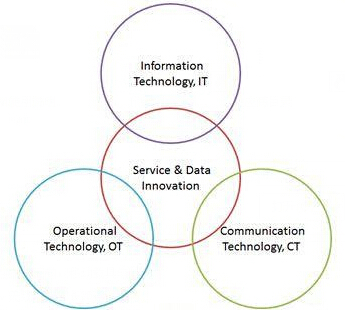Five changes in China's manufacturing industry
Under the market economy system, after more than 30 years of rapid development, it has released huge productivity and promoted China into a stage where the material is relatively rich and the market is relatively saturated. The manufacturing industry has changed from two-way competition of stocks and increments to stock competition.
Taking smartphones as an example, it began to appear in 2007 and became popular in 2009. Mobile phone manufacturers have swarmed and many domestic brands have been born. By 2016, it has gradually changed from incremental competition to stock competition. Up to now, several domestic brands such as Huawei, Xiaomi, VIVO and OPPO have formed a situation with Samsung and Apple.
In addition to emerging industries, the head brand in the manufacturing sector occupies the vast majority of market share, and it is difficult for new-born brands to break through, basically turning into stock competition.
Second, the transition from imitative innovation to original innovation
In the early and middle stages of China's manufacturing industry, imitative innovation is prevalent, and “cottage products” are flooding the market. With the market competition and the introduction of national policies, the awareness of intellectual property protection of enterprises has gradually increased, and more and more attention has been paid to their own technology patents. A large number of enterprises with core technological advantages have emerged.
Especially in recent years, with trade friction and market competition intensified, enterprises pay more attention to technological innovation and intellectual property protection, and enhance their core competitiveness. Along with China's scientific and technological progress, a large number of high-tech enterprises with core competitiveness have been born.
For example, in the field of mobile robots, core technology and core components have always restricted the development of domestic robots. Xianzhi robots have broken through the barriers of core technologies and mastered the core technology of mobile robot control and scheduling with independent intellectual property rights. The technical patent certification has achieved very good results in the industry.
Third, the transition from demographic dividend to human benefit
In the past, relying on the demographic dividend, it has promoted the rapid development of China's manufacturing industry and made China gradually become a global manufacturing power. In recent years, the development of China's labor situation has undergone significant changes. The "two inflection points" have come together: one is the Lewis turning point, that is, the turning point of the labor surplus is gradually becoming a shortage; the other is the turning point of the demographic dividend, that is, the labor population growth rate is lower than the non-labor The population has had a profound impact on the development of China's manufacturing industry.
However, with the development of China's economy, the level of domestic education has generally improved, the quality of the labor force has gradually improved, labor productivity has increased year by year, and the human effect dividend has gradually emerged. In the past, the work of machine replacement has improved production efficiency, and in the future, it will be the production capacity of human-controlled machines.
Viewpoint | Five shifts in China's manufacturing industry
Source: National Bureau of Statistics
Fourth, the transition from low-end manufacturing to high-end manufacturing
Although the total manufacturing industry in China has already ranked first in the world and the industrial system is very complete, low-end, low-end manufacturing accounts for a relatively high proportion, and high-end manufacturing has a large gap compared with the United States and Germany. After the financial crisis, manufacturing once again became the focus of competition among countries. On the one hand, China has accelerated the transformation and upgrading of traditional manufacturing industries, and on the other hand, promoted the high-quality development of manufacturing industries. Both methods have promoted the transformation of Chinese manufacturing from low-end manufacturing to high-end manufacturing.
5. From pursuing profit margins and cash flow to pursuing profit and cash
The external environment, the global economic slowdown after the financial crisis, and the increasing trade friction between China and the United States; the internal environment, the rising cost of land rents, the rising labor costs year by year, and the further strengthening of environmental protection policies and supervision, manufacturing companies bear both internal and external pressures. At the same time, the loanability and financing of the manufacturing industry are poor, and the capital situation of the enterprise is prone to problems. Therefore, enterprises are beginning to pursue profits and cash more and prevent possible risks.
Related articles
-
The use of robots to expand the size of the terminal block or benefit
The use of robots to expand the size of the terminal block or benefit
-

Analysis on the Key Technology Patent of Industrial Robot
Industrial robots are mainly stepper motor, DC motor, servo motor, hydraulic drive and pneumatic drive. Industrial robots are mainly composed of mechanical arm, sensor, driver, controller, grabber, en
-

You must know! Factory automation transformation of the five minefields
"Robot revolution" began, many companies have set foot on the factory automation "no return", no man factory seems to gradually become the future development trend of the factory. But the entire automated assembly line is sporadic to large enterprises, despite the government to vigorously promote the robot substitution policy, many companies received the state grant, simply put the equipment "dry" in the production workshop.
-

The Core Architecture of Industrial Internet
After reading a lot of the Internet, Internet of things, industrial networking, the German industry 4.0 and China made 2025, we come to understand the relevant architecture and issues.Whether it's IBM
-

What are the errors in industrial robots and what calibration needs to be done?
The vast majority of modern robots are model-based controls, and there are errors in the place where the model is located, so how much error is needed to compensate / calibrate depends on what model you use.
-

Taiwan's robot industry is the biggest challenge of these three key technologies
According to the Institute of Industrial Intelligence (MIC) observation, 2016 to 2021, the global industrial robot market is expected to grow 16.4%, Taiwan robot industry if you want to rush into this
-

Robot 3.0 times the arrival of consumer services robot will become the next blue ocean
Recently, China Telecom has released"Robot 3.0 years of artificial intelligence robot"report pointed out that from the industrial field to the consumer field, more and more robots began to replace the
-

An Analysis of the Current Advantages and Disadvantages of Industrial
Industrial robots and people compared with a stable quality, long work, to adapt to dangerous and dirty work, etc., and this article from the technical point of view to analyze the current stage of th
















 RCCN WeChat QrCode
RCCN WeChat QrCode Mobile WebSite
Mobile WebSite